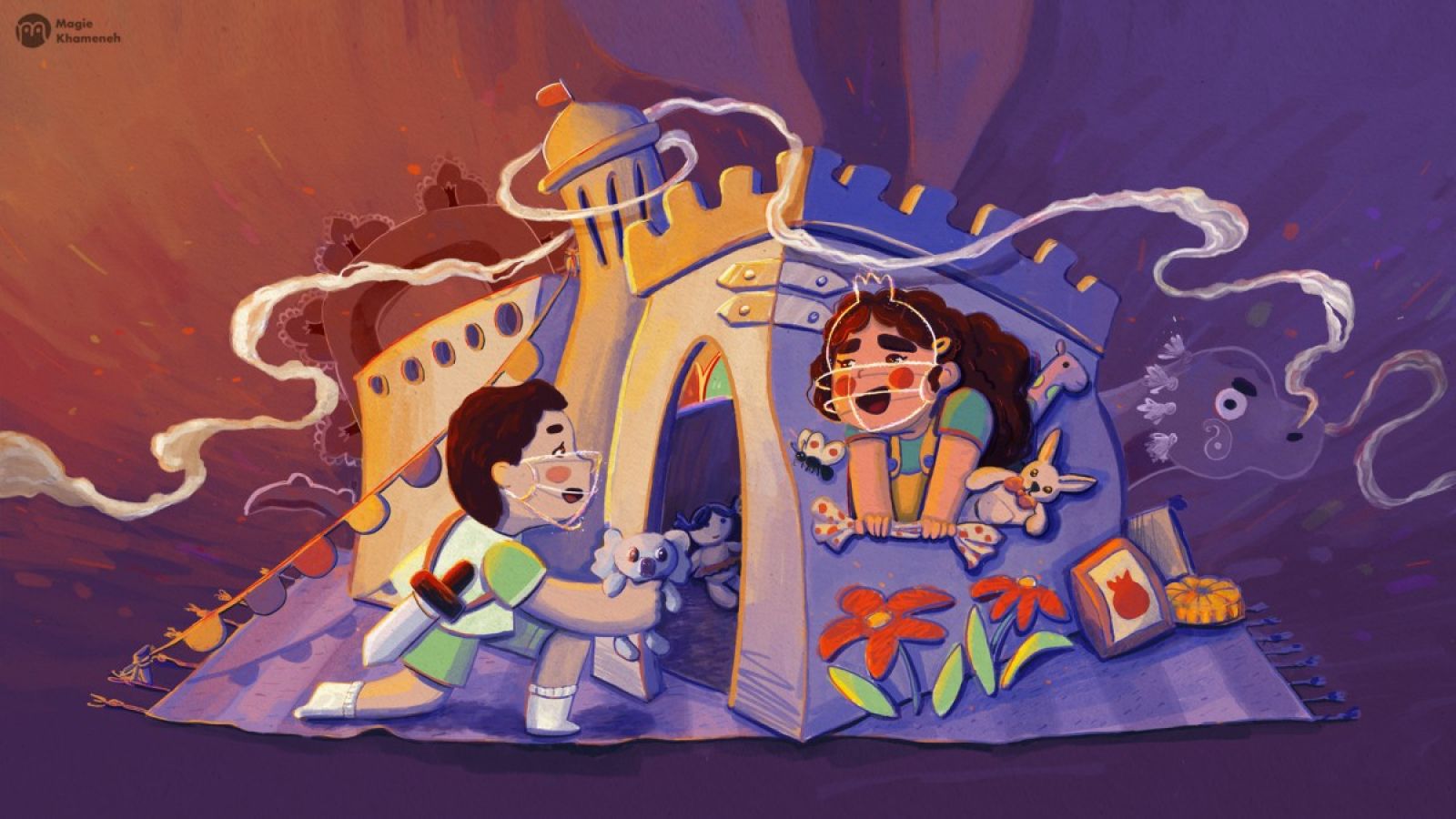Picture book aims to teach kids how to stay safe around bushfire smoke

An image from Shirin and Amir and the Dragon Smoke. Illustration: Magie Khameneh.
By Kyle Mackey-Laws
Researchers from The Australian National University (ANU) are behind new children’s books aimed at raising greater awareness and understanding for children around bushfire smoke.
As the east coast of Australia became engulfed in fires and smoke during the 2019-20 “Black Summer” bushfires, it became apparent there were limited resources available for people from culturally diverse communities.
There were even less resources aimed at helping children of those communities stay safe from bushfire smoke.
So researchers from the National Centre for Epidemiology and Population Health (NCEPH) and the Centre for Arab and Islamic Studies teamed up to address this need. Together they talked with community members, educators and children to identify what information was missing from bushfire health messaging, and how this could be addressed.
This cross-college research and collaboration culminated in the publication of children’s books* on bushfire smoke, including the picture book: Shirin and Amir and the Dragon Smoke.
The picture book follows the adventures of two curious children as they learn how to stay safe and respond resourcefully.
“We wanted to make a picture book about bushfire smoke, not the flames, as there didn’t appear to be any children’s books on this topic,” co-author Liz Drummond, and NCEPH Communication Officer, said.
“It was important not to scare the children, so I decided to focus on fun imaginative play. Drawing inspiration from watching the much-loved Aussie cartoon Bluey, I thought: what game would Bluey and Bingo make up in this situation?”
In this imaginary world the smoke isn’t bushfire smoke, it’s dragon smoke. The face mask is a helmet and they are brave knights, fighting the dragon. The puffer is a magic flute, and so on.
“So that was the idea, trying to make the safety elements into something fun.”
Jemima Shafei-Ongu was approached to collaborate with Drummond on the book, writing about cultural diversity through representation.
The Sydney children’s author looked at the drafts and was instantly taken with the story.
“I said, 'this is such a great concept, we should run with it, but we can innovate it to make it more energetic and inclusive,” she said.
"Inclusion is not about tokenising aspects of culture. Instead, it’s about focusing on the human experience so that the reader may connect with the theme(s), while the main characters just happen to be from under-represented backgrounds.”
The book has been translated by the Centre for Arab and Islamic Studies into Persian, Arabic and Turkish, and there are plans to send the book to all ACT primary schools, schools affected by bushfires on the NSW South Coast, and some selected community centres around the ACT, along with an Educator Guide for teachers to use when discussing the book with children.
Shafei-Ongu said it was important to make this type of messaging accessible regarding emergencies to people from culturally and linguistically marginalised backgrounds.
"These communities are often the last to find out through direct messaging.
“Resources like community radio often do a great job of connecting with their community and keeping them abreast with the latest news, but there may still be a gap in the knowledge between childrens' experiences of information at school and their parents' experience of the news.
“Picture books can be a wonderful conduit between parents' and childrens' experiences, can introduce and hold space for difficult conversations; and when bilingual texts are shared, can expand a child's experience of language and culture beyond the page.”
Illustrator Magie Khameneh was drawn to the project when the team approached her contacted by Drummond. Khameneh, who moved to Australia in 2019, takes inspiration from her Iranian/Azeri background.
“The first sweet surprise was when I saw the characters of the story have an Iranian background which is the same as mine,” Khameneh said.
“I thought, oh my goodness, this is the chance to illustrate some of the knowledge I have from my culture.
“The power of imagination can help children get through tough times. Like the idea of fighting with a dragon instead of the reality of bushfire, it engages the playful nature of children in the right direction and keeps them safe.
“I love the imaginary parts of the story the most."
Shirin and Amir and the Dragon Smoke is available to buy online through ANU and from all good bookshops. Educator resources and a project page can be found here, where you can download posters, activities and more.
* A second older reader style book was also developed: Captain Nadia and the can do crew. Both these books will be launched 4-6pm, 13 September at the Centre for Arabic and Islamic Studies.